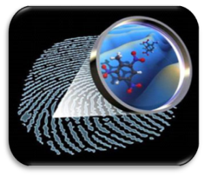Summary

Reliable detection and identification of trace residues (< 1 μg) of contraband materials like explosives, narcotics, and adulterants is important to establishing and maintaining public safety and security. We are conducting measurement science research to improve improve existing, and develop next-generation rapid screening methods to aid law enforcement for interdiction and public health for risk awareness.
Description

Screening of people and their belongings including luggage, vehicles, and packages for the presence of trace residues of explosives and narcotics (trace contraband detection) is widely used in aviation security and law enforcement. In common screening scenarios, trace contraband residues in the form of non-visible individual micrometer-sized particles are collected from suspect surfaces by using a wipe which is then directly inserted into an appropriate benchtop or handheld trace chemical detector. Positive identification of chemical traces from a targeted compound on a person or item suggests potential contact with bulk levels of contraband material and may prompt additional screening procedures or denial of entry into a facility or venue.
In collaboration with many agencies, including the Department of Homeland Security Science and Technology Directorate, the National Institute of Justice, and the Maryland Department of Health, NIST has developed the critical infrastructure to facilitate optimization, traceability and best practices in trace explosives and narcotics detection. The NIST research program supports the measurement and standards needs for all aspects of trace contraband screening - from sampling to analysis - and ultimately leads to improvements in the reliability and effectiveness of trace contraband detection systems as well as supporting development of next generation detection technologies. NIST works with key stakeholders in government, academia and private industry to identify gaps and develop unique measurement capabilities and test materials to understand and evaluate trace detection equipment, including the critical front-end sampling process. The metrology and standards program for trace contraband detection is related to and highly leveraged with group research programs in Forensic Science and Measurement and Sampling Standards.
"Review of the National Institute of Standards and Technology Research Program in Trace Contraband Detection," G. Gillen, J. Verkouteren, M. Najarro, M. Staymates, M. Verkouteren, R. Fletcher, S. Muramoto, J. Staymates, J. Lawrence, L. Robinson, E. Sisco, T. P. Forbes, J. Bennett, and A. Bulk, in Homeland Security and Public Safety: Research, Applications and Standards, ed. P. Mattson and J. Marshall (West Conshohocken, PA: ASTM International, 2019), 49-62. https://doi.org/10.1520/STP161420180050
Current Activities
- Nature of the Threat
- Advanced Mass Spectrometry for Trace Detection
- Aerodynamic Flow Visualization
- Inkjet Printing and Precision Deposition
- Optimization of Current and Next Generation Trace Contraband Detection Systems
- Training for Screeners and Lab Staff
- Measurement and Sampling
- Illicit Narcotics Detection

